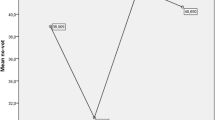Abstract
This article is a reply and extension to a paper published by Jean-Yves Dormagen and Laura Michel in this journal in early 2018. In their paper “Do surveys accurately report voters over 80 years old?”, the authors examined the deviations of aggregated self-reported turnout in three French electoral surveys from the factual turnout in the French presidential elections of 2002, 2007 and 2012. The tested election studies used a quota sampling method, which suffers most likely from selection bias. Indeed, the authors found a clear underrepresentation of the oldest population older than 85 years in all three studies and a strong overestimation of voting in this age cohort. In this article, I replicate their analysis with probability-based surveys and test whether the bias in turnout of the elderly also occurs in randomly drawn samples. For this purpose, I analysed data of three cross sections of the European Social Survey (ESS-1, ESS-4 and ESS-6). My results show that the probability-based surveys are indeed closer to true values derived from large-scale administrative data. The bias in turnout in the ESS data is nevertheless still stronger in the oldest age cohorts compared to all the other age cohorts. This could be the cause of a higher nonresponse among the elderly. Moreover, the ESS does not cover the institutionalised population. In France, more than 13% of the population older than 80 years are institutionalised and live in retirement and nursing homes. I assume that this part of the population has a lower probability to vote than the elderly living in private households. Their exclusion from the ESS therefore increases the distortion of self-reported voting behaviour compared to the factual turnout of old-aged residents.





Similar content being viewed by others
Notes
The latter only affects a small number of 77 respondents in the first round of the ESS.
See “Appendix”.
The unweighted ESS results are not shown in this article.
A value of 1 would indicate equivalence of shares in the survey data with the INSEE benchmark data.
Please note, in the simulation I assume that all French institutionalised residents are registered to vote. This assumption does probably not hold for all institutionalised residents, especially if they suffer from dementia. According to INSEE data, the oldest age cohorts show the highest rate of registration on the voting lists with 95% for the population older than 50 years (INSEE 2012).
A similar turnout would make no difference in the results compared to the original ESS samples with community-dwelling respondents only.
The tables for ESS-1 and ESS-4 can be found in “Appendix”.
See “Appendix”.
See “Appendix”.
References
Angelini, V., and A. Laferrère. 2012. Residential mobility of the European elderly. CESifo Economic Studies 58(3): 544–569.
Bernstein, R., A. Chadha, and R. Montjoy. 2001. Overreporting voting: Why it happens and why it matters. Public opinion quarterly 65(1): 22–44.
Biemer, P.P. 2010. Total survey error: Design, implementation, and evaluation. Public Opinion Quarterly 74(5): 817–848.
Cautrès, B., N. Mayer, and A.C. Salomon. 2003. The French electoral panel 2002. French Politics 1(2): 243–245.
CEVIPOF-Ministère de l’Intérieure. 2007. Enquête post électorale présidentielle 2007: Résultats d’ensemble.
Chambers, R., and C. Skinner. 2003. Analysis of survey data. New York: Wiley.
DeBell, M. et al. (2018). The turnout gap in surveys. Sociological Methods & Research. https://doi.org/10.1177/0049124118769085.
Désesquelles, A., and N. Brouard. 2003. The family networks of people aged 60 and over living at home or in an institution. Population 58(2): 201–227.
Dormagen, J.-Y., and L. Michel. 2018. Do surveys accurately report voters over 80 years old? French Politics. https://doi.org/10.1057/s41253-018-0056-y.
ESS. 2002. European social survey round 1: Data file edition 6.5, NSD—Norwegian Centre for Research Data, Norway—Data Archive and distributor of ESS data for ESS ERIC.
ESS. 2008. European social survey round 4: Data file edition 4.4, NSD—Norwegian Centre for Research Data, Norway—Data Archive and distributor of ESS data for ESS ERIC.
ESS. 2012. European social survey round 6: Data file edition 2.3., NSD—Norwegian Centre for Research Data, Norway—Data Archive and distributor of ESS data for ESS ERIC.
ESS. 2013. ESS6—2012 documentation report.
ESS. 2014. Documentation of ESS post-stratification weights. https://www.europeansocialsurvey.org/docs/methodology/ESS1-5_post_stratification_weights_documentation.pdf. Accessed 14 Jan 2019.
Eurostat. 2016. European statistical system—Census Hub. https://ec.europa.eu/CensusHub2. Accessed 14 Jan 2019.
Groves, R., et al. 2009. Survey methodology, vol. 2. New York: Wiley.
Groves, R.M., and L. Lyberg. 2010. Total survey error: Past, present, and future. Public Opinion Quarterly 74(5): 849–879.
INSEE. 2012. L’inscription et la participation électorales en 2012: Qui est inscrit et qui vote. https://www.insee.fr/fr/statistiques/1281060. Accessed 14 Jan 2019.
Jowell, R., and CCT. 2003. European social survey 2002/2003: Technical Report, London.
Laferrère, A., A. Van Den Heede, and K. Van Den Bosch. 2012. Entry into institutional care: Predictors and alternatives. In Active ageing and solidarity between generations in Europe, ed. A. Börsch-Supan et al., 253–264. Berlin: de Gruyter.
Lessler, J.T., and W.D. Kalsbeek. 1992. Nonsampling error in surveys. New York: Wiley.
Levy, P., and S. Lemeshow. 2013. Sampling of populations: Methods and applications. New York: Wiley.
Lohr, S. 2008. Coverage and Sampling. In International handbook of survey methodology, ed. E. de Leeuw, J. Hox, and D. Dillman, 97–112. New York: European Association of Methodology.
Luppa, M., et al. 2010. Prediction of institutionalization in the elderly. A systematic review. Age and Ageing 39(1): 31–38.
Lynn, P. 2008. The problem of nonresponse. In International handbook of survey methodology, ed. E. de Leeuw, J. Hox, and D. Dillman, 35–55. New York: European Association of Methodology.
McCann, M., E. Grundy, and D. O’Reilly. 2012. Why is housing tenure associated with a lower risk of admission to a nursing or residential home? Wealth, health and the incentive to keep “my home”. Journal of Epidemiology and Community Health 66(2): 166–169.
Peytchev, A., S. Presser, and M. Zhang. 2018. Improving traditional nonresponse bias adjustments: Combining statistical properties with social theory. Journal of Survey Statistics and Methodology 6(4): 1–25.
Pirou, D., N. Poullain, and S. Rochelle. 2013. La vie en communauté.
Rodríguez-Sánchez, B., et al. 2017. Diabetes-associated factors as predictors of nursing home admission and costs in the elderly across Europe. Journal of the American Medical Directors Association 18(1): 74–82.
Schanze, J.-L. 2017. Report on sampling practices for the institutionalized population in social. https://seriss.eu/resources/deliverables/. Accessed 14 Jan 2019.
Sciarini, P., and A.C. Goldberg. 2016. Turnout bias in postelection surveys: political involvement, survey participation, and vote overreporting. Journal of Survey Statistics and Methodology 4(1): 110–137.
Toot, S., et al. 2017. Causes of nursing home placement for older people with dementia: a systematic review and meta-analysis. International Psychogeriatrics 29(02): 195–208.
Voogt, R. 2004. I’m not interested—Nonresponse bias, response bias and stimulus effects in election research. Universiteit van Amsterdam.
Wolff, F.-C. 2013. Well-being of elderly people living in nursing homes: the benefits of making friends. Kyklos 66(1): 153–171.
Author information
Authors and Affiliations
Corresponding author
Additional information
Publisher's Note
Springer Nature remains neutral with regard to jurisdictional claims in published maps and institutional affiliations.
Appendix
Appendix
See Figs. 6, 7, 8, 9, 10 and Tables 4, 5.
Share of residents living in collective households within respective age and gender cohorts in France (2011; Eurostat 2016)
Demographic representation of age groups in the population eligible to vote in the PEF and ESS (2008)
Estimated turnout in the PEF and in the ESS in different age cohorts compared to true turnout (2008, weighted)
Rights and permissions
About this article
Cite this article
Schanze, JL. A reply to “Do surveys accurately report voters over 80 years old?”: testing for bias in probability-based surveys of private households. Fr Polit 17, 26–44 (2019). https://doi.org/10.1057/s41253-019-00080-y
Published:
Issue Date:
DOI: https://doi.org/10.1057/s41253-019-00080-y









